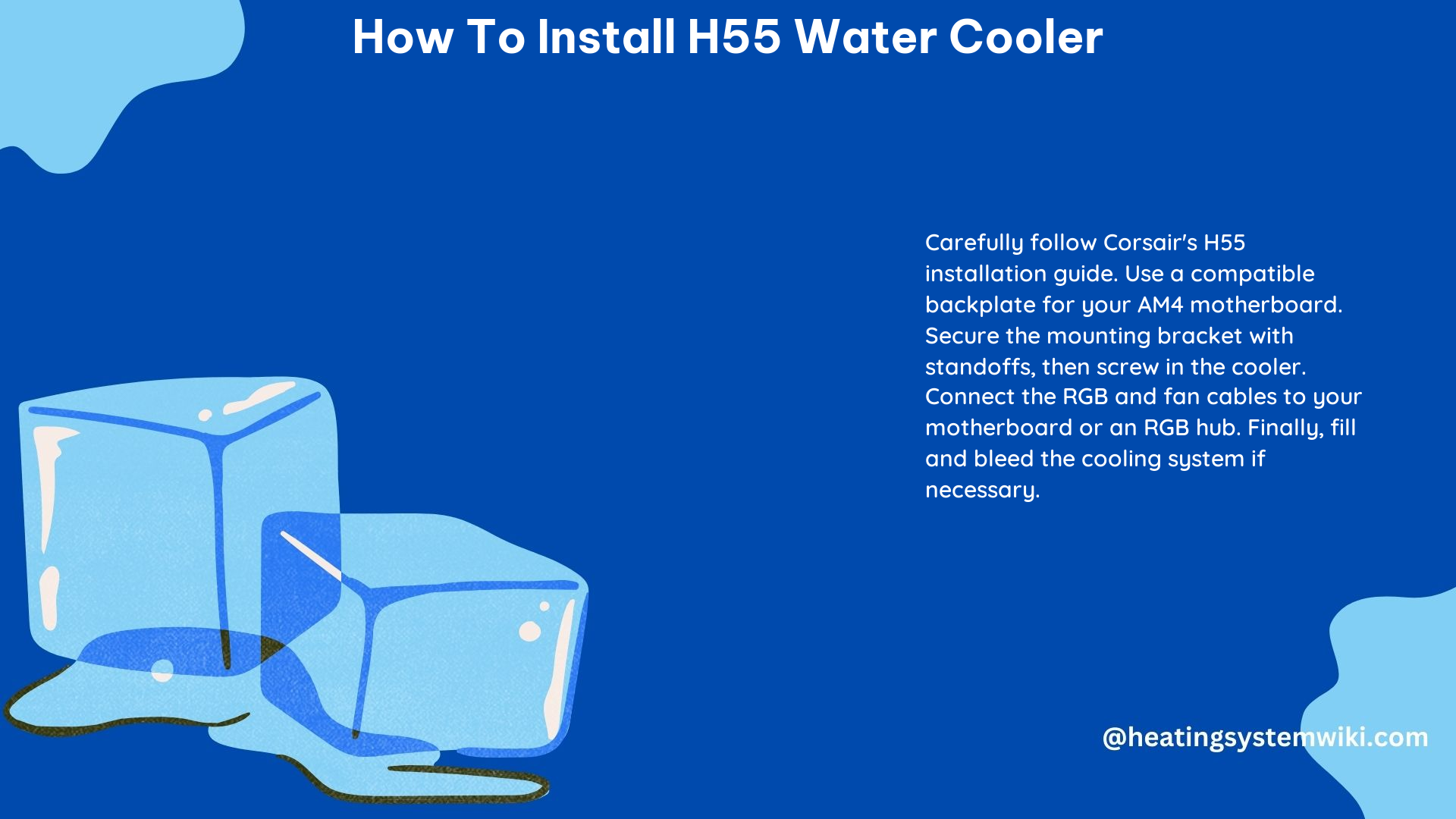The Corsair H55 RGB 120mm Liquid CPU Cooler is a high-performance, low-noise water cooling solution designed for efficient and quiet cooling of modern CPUs. This comprehensive guide will walk you through the step-by-step installation process, ensuring a seamless and successful setup for your H55 water cooler.
Technical Specifications of the H55 Water Cooler
The Corsair H55 RGB 120mm Liquid CPU Cooler boasts the following technical specifications:
- Radiator Size: 120mm
- Mounting Compatibility: LGA 1200, LGA 115X, LGA 2066, AM4
- Pump: Low-noise design for quiet operation
- Cold Plate: Thermally optimized copper for efficient heat transfer
- Fan: 120mm PWM fan for optimal airflow and cooling
- RGB Lighting: Customizable RGB lighting for personalized aesthetics
- Dimensions: 155mm x 120mm x 27mm (Length x Width x Thickness)
- Weight: 760g (including fans)
Pre-Installation Checklist

Before you begin the installation process, ensure you have the following components and tools ready:
- Corsair H55 RGB 120mm Liquid CPU Cooler
- Backplate for your specific CPU socket (included with the H55 cooler)
- Mounting screws and hardware (included with the H55 cooler)
- Thermal paste (optional, but recommended for optimal heat transfer)
- Screwdriver (Phillips head)
- Distilled water or pre-mixed coolant solution (for filling the water cooler)
Step-by-Step Installation Guide
-
Remove the Stock Cooler: Begin by removing the existing CPU cooler from your system. This typically involves unscrewing or unclipping the mounting mechanism.
-
Install the Backplate: Attach the provided backplate to the rear of your motherboard. This backplate will serve as the stable foundation for the H55 water cooler.
-
Attach the Mounting Bracket: Secure the modular, tool-free mounting bracket to the H55 water cooler. This bracket is designed for quick and easy installation on various CPU sockets.
-
Position the Water Cooler: Carefully place the H55 water cooler on top of your CPU, aligning the mounting holes with the backplate installed in step 2.
-
Secure the Water Cooler: Use the provided mounting screws to securely fasten the H55 water cooler to the motherboard. Ensure the cooler is tightened firmly, but avoid overtightening, as this can damage the motherboard.
-
Connect the Power Cable: Plug the power cable from the H55 water cooler into the appropriate header on your motherboard. This will provide power to the pump and fans.
-
Fill the Water Cooler: Remove the top cover of the H55 water cooler and fill it with either distilled water or a pre-mixed coolant solution. Be careful not to overfill the cooler.
-
Replace the Top Cover: Securely replace the top cover of the H55 water cooler, ensuring it is properly sealed.
-
Power On and Monitor Temperatures: Turn on your computer and monitor the CPU temperatures to ensure the H55 water cooler is functioning correctly. Adjust the fan speed or RGB lighting settings as desired.
Additional Tips and Considerations
- Case Clearance: Ensure your computer case has sufficient clearance for the 120mm radiator and fans of the H55 water cooler.
- Thermal Paste Application: Apply a pea-sized amount of thermal paste between the CPU and the water cooler’s cold plate for optimal heat transfer.
- Handling Precautions: Be cautious when handling the components to avoid damaging any sensitive parts during the installation process.
- Manufacturer’s Instructions: Refer to the manufacturer’s instructions for any socket-specific installation details or troubleshooting guidance.
Reference
- [SOLVED] – Installing an H55 water cooler on AM4 motherboard: https://forums.tomshardware.com/threads/installing-an-h55-water-cooler-on-am4-motherboard.3433816/
- H55 RGB 120mm Liquid CPU Cooler – Corsair: https://www.corsair.com/br/en/p/cpu-coolers/cw-9060052-ww/h55-rgb-120mm-liquid-cpu-cooler-cw-9060052-ww
- Corsair H55 Cooler Installation Guide for AMD and Intel Motherboards: https://www.youtube.com/watch?v=j7aNeIlQssw
